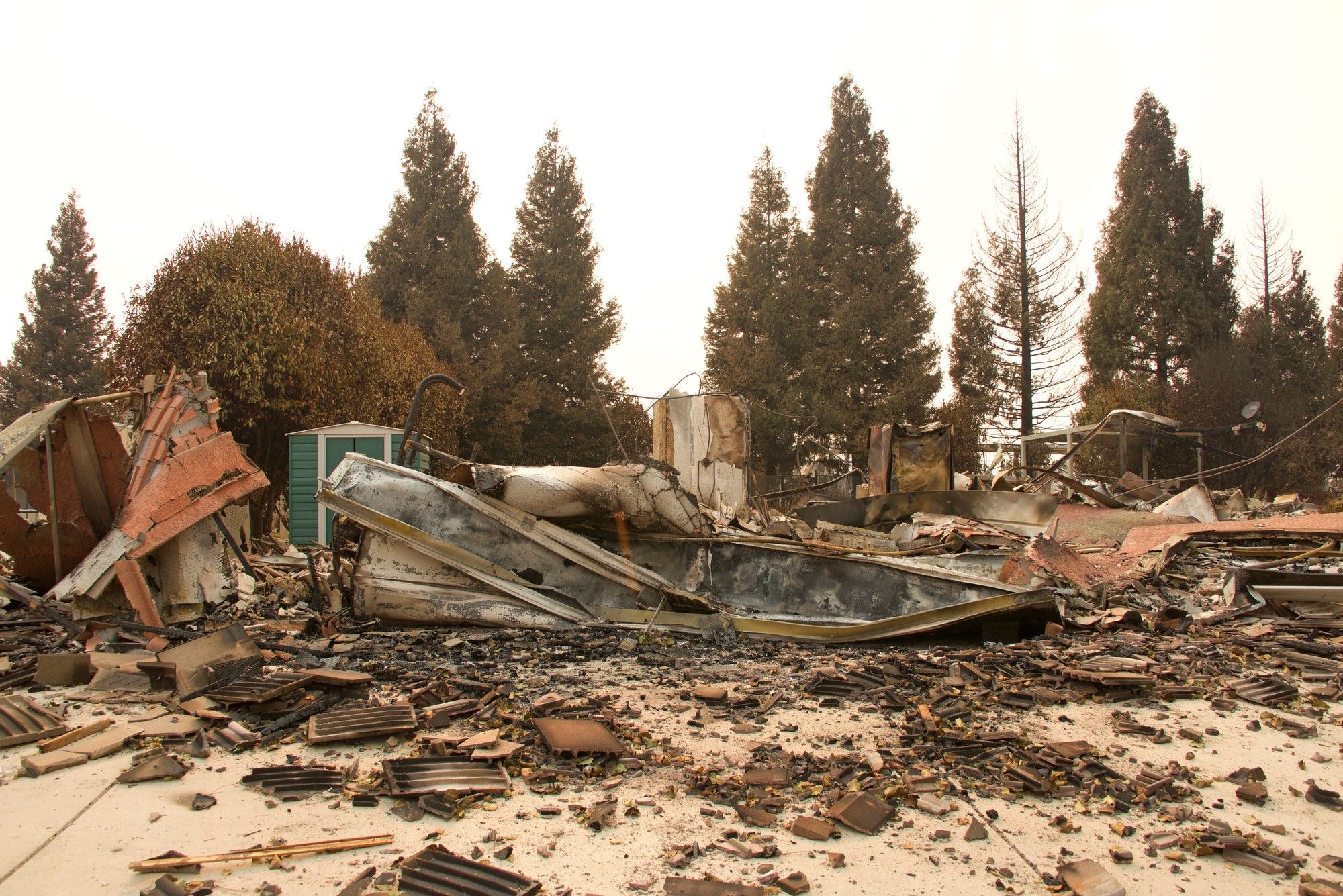Top Class Actions’s website and social media posts use affiliate links. If you make a purchase using such links, we may receive a commission, but it will not result in any additional charges to you. Please review our Affiliate Link Disclosure for more information.
On March 16, California utilities provider Pacific Gas & Electric (PG&E) received court approval to raise approximately $23 billion to pay off debts accumulated after the company’s electrical equipment sparked devastating wildfires in 2017 and 2018.
PG&E Aims to Exit Bankruptcy Following California Wildfires
The permission from the court came after California Gov. Gavin Newsom dropped his opposition to granting the utility company a financing package designed to aid PG&E in its attempts to get out of bankruptcy, according to the Bay Area NBC affiliate. PG&E filed for bankruptcy in January 2019 after several lawsuits and investigations accused the utility of being responsible for the catastrophic California wildfires, including the Camp Fire. These lawsuits exposed PG&E to a potential $30 billion in liability due to the injuries and destruction caused by the fires. The Camp Fire alone caused at least 85 deaths and the destruction of more than 18,000 homes and buildings.
According to CBS News, PG&E had known for years that “dozens of its aging power lines posed a wildfire threat yet failed to replace or repair them.” Gov. Newsom said previously that he feared the company would be taking on too much debt to be able to afford the necessary upgrades to its old and ill-maintained electrical grid. These updates are projected to cost about $40 billion.
The average age of PG&E equipment is 70 years, with some towers in existence for nearly a century. At least 1,000 high priority safety risks related to transmission lines and towers were discovered in the wake of the fire. Without the upgrades, it’s possible that PG&E equipment would continue to spark wildfires. After PG&E was able to show commitments from investors promising to purchase up to $12 billion in company stock, Newsom conceded.
Much of the $23 billion will be used to pay off approximately $25.5 billion in claims and settlements between PG&E and victims of California wildfires in addition to insurance companies and government agencies. Several people who lost their homes have already filed lawsuits against the utility.
PG&E’s is the largest bankruptcy in U.S. history. The company is California’s largest utility provider, serving approximately 16 million customers.
Impact of California Wildfires
In May, California state agency Cal Fire announced that after a thorough investigation, it determined that PG&E was responsible for the Camp Fire, which burned across more than 150,000 acres, resulting in damage to over 18,000 homes and buildings and displacing tens of thousands of people. Approximately $16.5 billion worth of damage resulted from that fire.
The town of Paradise was especially affected by the blaze, with nearly 90 percent of the town’s population being displaced, USA Today reported. As of April 2019, just 2,034 of the town’s 29,000 residents still lived in Paradise.
According to Cal Fire’s investigation, electrical transmission lines owned by PG&E were to blame for the fire. These faulty lines, in combination with dry vegetation, strong winds, warm temperatures, and low humidity allowed the fire to spread quickly. In an attempt to reduce the risk of future California wildfires caused by electrical equipment, the state has announced plans to increase brush-clearing and tree-thinning efforts to remove dry vegetation from the environment, as well as requiring utility companies to maintain and update faulty equipment.
If electrical equipment is not repaired, and dry vegetation is not removed from the environment, future California wildfires may spark, risking injuries, fatalities, business loss, and property damage. The damage caused by these fires may include damage to homes and other buildings, destruction of natural vegetation and landscaping, damage to fencing, and soil erosion. While many California residents have property insurance, it may not always cover damage to fencing, outbuildings, and other structures. Additionally, residents who were displaced or whose homes or offices were affected by the blaze may have lost income due to the fires.
People who have suffered property damage, injuries, or lost wages due to California wildfires caused by PG&E or other utility companies may be eligible to pursue compensation for these damages. Even those who have already received payouts from their insurance companies may benefit from speaking to a qualified attorney to ensure that they have received the compensation to which they are entitled.
Join a Free California Wildfire Property Damage Lawsuit Investigation
If you or a loved one suffered property damage in the Camp Fire, Woolsey Fire, Hill Fire or last year’s Thomas Fire, legal help is available to help you through the claim process with your insurance company.
This article is not legal advice. It is presented
for informational purposes only.
ATTORNEY ADVERTISING
Top Class Actions is a Proud Member of the American Bar Association
LEGAL INFORMATION IS NOT LEGAL ADVICE
Top Class Actions Legal Statement
©2008 – 2024 Top Class Actions® LLC
Various Trademarks held by their respective owners
This website is not intended for viewing or usage by European Union citizens.
Get Help – It’s Free
Join a Free California Wildfire Property Damage Lawsuit Investigation
If you qualify, an attorney will contact you to discuss the details of your potential case at no charge to you.
PLEASE NOTE: If you want to participate in this investigation, it is imperative that you reply to the law firm if they call or email you. Failing to do so may result in you not getting signed up as a client or getting you dropped as a client.
E-mail any problems with this form to:
Questions@TopClassActions.com.
Oops! We could not locate your form.














